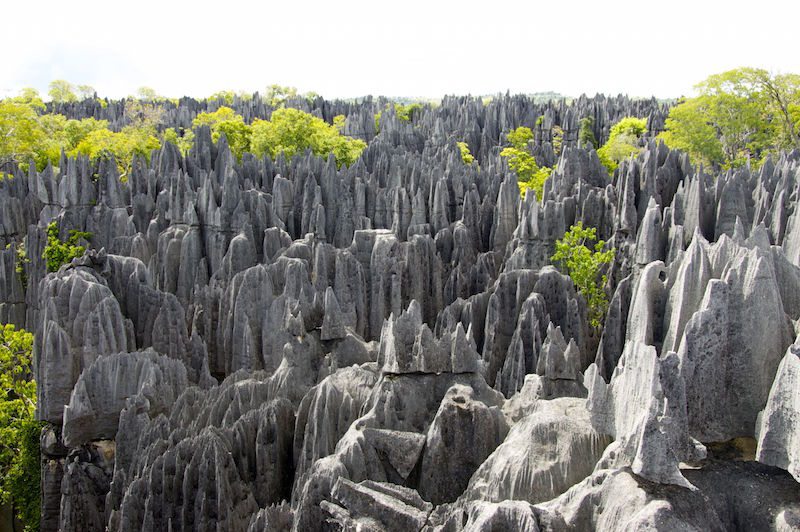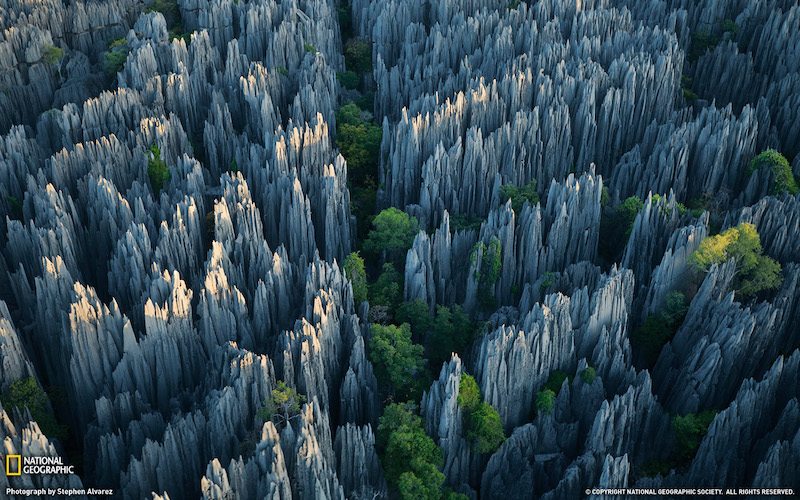Tsingy de Bemaraha, Madagascar
Episode #4 of the course “Natural Wonders of the World”
The island of Madagascar is home to some of the world’s most unusual environments and animals, including the Tsingy de Bemaraha and its inhabitants. Over time and over a stretch of hundreds of miles, the Tsingy de Bemaraha National Park has been created. The park is comprised of two major geological formations where the water has cut through the plateaus, leaving behind the Great Tsingy and the Little Tsingy. In the native language, Malagasy, the word “tsingy” means “where one cannot walk barefoot.” However, because of the unique rock formations and dangerous conditions, very few people walk there at all.
After a dangerous journey to approach the plateaus, a visitor has difficulty moving between, above, on top of, or around the tsingy. The tsingy “limestone forests” are structures of towering, sometimes razor-sharp pillars of limestone. They remain largely unmapped because it is so difficult and life-threatening to navigate them. Researchers have difficulty bringing equipment in to take measurements and observations, so the rocks remain largely undated and unexplored.

Tsingy towers can be so tall that trees grow between them, and indeed there are dense forests on the west side of the plateau. The east side of the plateau is forested but includes large, sparse savannas as well. Because of the unique terrain, hundreds of animals live there that have yet to be discovered by people. New species of frogs, lemurs, bats, and other creatures are being discovered in the tsingy, living among ancient geological formations and plant life that don’t exist anywhere else on the planet.
Share with friends

